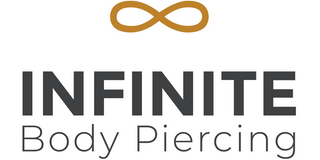
Piercing is Queer
Even though we're more than halfway through June, we'd like to celebrate all the LGBTQ+ folks who have contributed to make our industry what it is today. It’s always a little suspicious when businesses profess their support for PRIDE (and the results are often mixed), but for us it is personal. Most of us at Infinite grew up “different,” and that’s often a big part of what draws us to this practice and this community. For those of us who just never fit into the heteronormative gender binary, PRIDE month is a time to let our freak flags fly just a little bit higher. Piercing is queer, and always has been.
In last year’s “Piercing is Gay” post, we talked a bit about the early history of modern body piercing: how it was born from the gay community, and how it had two fathers (and a grandfather) that were the people who are championed as the early originators. Looking back, I may have gone a little heavy-handed into a "Great Man" type of history. While a common way to look at the past is as a series of events shaped by the actions of select “great men,” it can be reductive and minimizes the impact of those around them—in this case, an already doubly marginalized community. Looking at our history that way excludes a whole host of people who were, collectively, just as important in bringing piercing to the place it is today. History is often less about the work of a small number of people, and more the result of the zeitgeist that carries pivotal people along a wave of cultural change—and the popularization of modern piercing is a good example.
So this year we’re celebrating all the many queer folks who have been instrumental in modern piercing’s history, from it’s humble beginnings in the gay leather communities of Los Angeles and San Francisco, to the haven it is now to all of us who just don‘t seem to fit into whatever “normal” is.

Photo by Eric Parker, via Flickr.
Why “queer?” Isn’t that considered a slur?
Historically, the word queer was—and still can be—used as a pejorative term against members of the LGBT community. However, beginning in the 1960s in the wake of the burgeoning LGBT rights movement, people in the community sought to reclaim the word queer as an umbrella term for all non-heterosexual, non-cisgender identities. That's what the Q stands for in the acronym LGBTQ! Despite today's wide acceptance of the word queer, it is still important to recognize that not all members of the LGBTQ community identify as queer, and may still find the term offensive.
In the ‘90s we also saw the more militant, more political reclamation of the word “queer” by the New York-based Queer Nation. While many of the older generation still felt the sting of the word ("I just don't get it— 'queer' is the word they used to torture us with."), Queer Nation confrontationally embraced the word in their manifesto and their activism, introducing the slogan “We’re here. We’re queer. Get used to it!”
The early ‘90s not coincidentally saw the popularity of modern body piercing enter the mainstream in the United States. The publication of Modern Primitives in 1989 popularized a certain flavor of body modification with the art and punk underground, and in 1993, the video for Aerosmith’s “Cryin’” came out, and piercing blew up into the mainstream—and things were never the same again.
Infinite Body Piercing was started in 1994, eighteen months after the video that changed things so much for all of us. At the time, we were all riding the tsunami as piercing burst forth into the popular culture, bringing along its gay roots. The militant queers, the trans activists, leatherdykes and other pro-sex feminists, the goth/industrial fetishists, the “modern primitives,” and the rest of us worked to create a safe space for everyone on the outside of heteronormative sexuality and gender expression.

Photo by Eric Parker, via Flickr.
It was also a movement to reclaim our bodies, and our sense of agency. The body was political, and our attempts to subvert the norm tied into the culture of those who were still fighting to be who they were, and to love (and have sex with) who they wanted to—all against the backdrop of the AIDS crisis and all that went along with it.

Barbara Kruger's iconic, Untitled (Your Body is a Battleground), from 1989.
While there were still many “great men'' and women (and non-binary folk) who were notable in our history, it was all of us collectively who found ourselves riding a cultural wave—and sometimes just struggling to hold on. It’s easier to look back and get some historical context, but then we were just overjoyed to be doing what we loved, in a community that worked to create a safe haven for us, and everyone like us, to be ourselves.

Staff from Infinite's Baltimore crew (and friends) at the Read Street PRIDE festival.
This month (and always, really) we are embracing and celebrating our queerness. We received this year’s new shirt design right in the middle of PRIDE month, and we couldn’t be more… Well, proud. Our new shirts are emblazoned with “Queer” across the front, with “We’re here, we’re queer” and our info on the back. They are available in tees, muscle tees, and cropped tees at both our Philly and Baltimore studios, and can also be ordered from our online store. Additionally, all orders (jewelry, apparel, or aftercare) from our web store this month will get one of our multicolored PRIDE stickers included with their shipment.

So this month (and every month) we’d like to salute all the queer folks who helped to build our industry, and all those who keep it going. We’re here, we’re queer, and we’re used to it.


Leave a comment